Our 12-days Yangtze river tour includes five cities—Hong Kong, Chongqing, Shanghai, Xi’an, and Beijing. These cities are very popular sites in the top China tours with Yangtze river cruise since numerous sites are contained, such as Victoria Peak in Hong Kong, Fengdu“Ghost City”in Chongqing, the Bund in Shanghai, Terra Cotta Warriors and Horses Museum in Xi’an, and the Forbidden City in Beijing. You can experience charms of different cities and enjoy various Chinese food. In Hong Kong, you may be obsessed with the charm of the combination of Eastern and Western cultures. In Chongqing, you may be impressed with the spicy food. In Shanghai, you may be attracted by the beauty of the buildings. In Beijing, you may be drawn by the magnificent Forbidden City. Hope this journey becomes the best Yangtze cruise China tour in your mind.

Arriving in Hong Kong, your local guide will be waiting for you at the airport with a pick-up card where there are your names. Afterward, your guide will take you to the hotel downtown and help you check in. Then you could do anything you want or take a good rest in the hotel.
Our Yangtze River Cruise Tour begins with Hong Kong. Located in the south of China, Hong Kong has a population of 7,474,200, covering an area of 1,106.66 square kilometers. Hong Kong belongs to a subtropical monsoon climate, which enters its rainy season from May to September. Its annual average temperature is 787.54℉. Since the Second World War, Hong Kong has become one of the richest and the most developed areas with the highest living standard. It is also well known as Pearl of the Orient, shopping paradise, and the cate heaven.
Today your Yangtze River Cruise Tour will begin with Victoria Peak in Hong Kong. Victoria Peak is also called Cheqi(In Chinese, Che means pulling, qi means flag) Mountain which means that the mountain where the flag hangs. It is said that the pirate Zhang Baozai of the Qing Dynasty (1636-1912) illegally and forcibly occupied Hong Kong island. He used this mountain as a lookout post to inform his accomplices on the sea by pulling the flag. Hence, it got its name as Cheqi Mountain. In 1842, Hong Kong was officially ruled by the United Kingdom when the British hung their national flag on the mountain to proclaim their sovereignty. It is also said that the British used the name of their Queen Victoria to name Victoria Peak. Located in the north of Hong Kong Island, Victoria Peak is the highest mountain on Hong Kong Island with an altitude of 554 meters. It is also the best site to overlook the fabulous scenery of Victoria Harbour. Furthermore, Victoria Peak is also known as a luxury residential area. In 1868, Governor in Hong Kong, MacDonald chose Victoria Peak to build his summer house due to its pleasantly cool living environment. Therefore, it was gradually becoming a fashion for the rich and celebrities who ran after to migrate to Victoria Peak. At that time, if the rich or celebrities wanted to get to and from the top of the mountain, they needed to hire a human-powered sedan chair carried by bearers as a means of transportation. Nowadays, we could take the Peak Tram to reach the top of the mountain, saving a lot of time and energy. In 1881, Alexander Finley Smith, who worked for the Highland Railway in Scotland, proposed to Sir Hennessy, then Governor of Hong Kong, the construction of the Hong Kong Island Cable Car Railway. That is the predecessor of the Peak Tram today. You will see an open-air museum of Peak Tram on the way to take the Peak Tram. The guide will tell you more history of the Peak Tram if you are interested.
After experiencing the charm of Victoria Peak, we will go to Repulse Bay for sightseeing. Lying in the south of Hong Kong Island, Repulse Bay is the most representative bay in Hong Kong. It is distinguished for its long beach, wide beach bed as well as clear and quiet water. The Repulse Bay has a well-earned reputation as Oriental Hawaii. It is reported that its name derives from a British royal warship that garrisoned in the bay to protect the bay from the harassment of the pirates, meaning defeat. We will give you some free time to walk around.
Next, we will go to the Stanley Market located in the south of Hong Kong Island, 20 km from downtown. It not only has an enchanting landscape but also has rich cultural and historical deposits. There are numerous shops in the Stanley Market selling silk clothes including sportswear and jeans. Additionally, you can also see volumes of antiques and souvenirs in the Stanley Market. When you leave this place, you could buy some souvenirs for your families and friends. After visiting, we will drive you back to the hotel.
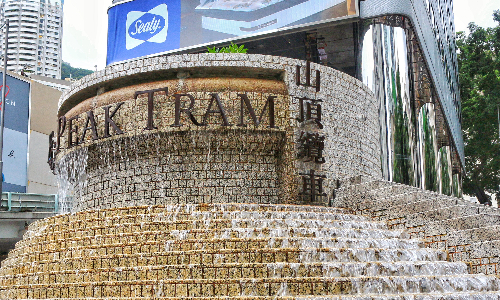
 Chongqing
Chongqing In the morning we will take a flight to Chongqing which is your second stop on the Yangtze River tour. Chongqing is also called a mountain city since there are many hills. It has a permanent resident population of 32,054,200, covering an area of 824,000 square kilometers. Located in the southwest of inland China, Chongqing is an economic center of the upper reaches of the Yangtze River. There are various delicacies in Chongqing such as hot pot, Chongqing small noodles, and spicy chicken.
After arriving in Chongqing in the afternoon, your local tour guide will pick you up to head to Chaotianmen Pier where you will take the Yangtze River Cruise. It is 28.6 km from the airport to Chaotianmen Pier, so it will take you around 1 hour from Chongqing Jiangbei International Airport to Chaotianmen Pier by car. After going through the formalities, the tour guide will get off the cruise. The cruise stops boarding at 20:30 and leaves at 21:00. The rooms of the cruise are all built according to the national standard of 4 stars and above, with the highest rating being 5 stars. The rooms are divided into standard rooms, deluxe suites, and presidential suites. The dining options are also rich, featuring a combination of Chinese and Western buffets. Your memorable cruise tour will begin tonight.
In the morning, you could wake up naturally and enjoy your delicious buffet breakfast. Or you can take part in the Tai Chi activity. If you would like to read a book over a cup of coffee while appreciating the fabulous scenery, it will be ok.
Today, we will have 2 shore excursions during which we will visit Shibaozhai Pagoda and Fengdu “Ghost City” which needs extra pay. As an important heritage site under state protection, Shibaozhai Pagoda is one of the best tourist attractions with a reputation of the pearl on the river. It is a 12-storeyed building, composed of the gate, the body, and a cockloft, with a height of 56 meters. It is said that Shibaozhai Pagoda was built based on a boulder uprooted from a steep, solitary peak. Standing on the top of the boulder, you will have a wonderful view of the roiling Yangtze River.
Afterward, we will visit Fengdu “Ghost City” which needs an extra fee. It lies on the north side of the Yangtze River and is called netherworld since there are numerous buildings featured with the hell. It is a historic city originating from the Han Dynasty (202-220), which is also the home to the soul of deceased people. Fengdu “Ghost City” was built by people through imagination. People built a series of netherworld structures, including the Palace of Hell, the gate of Hell, the eighteenth Hell and so on. The statues of the netherworld respectively simulate the litigation, court, and prison in the reality, showing Chinese people’s ideas of god and ghost as well as paradise and hell. The Devils Shrine is a place where you could appreciate the traditional Chinese buildings, such as the stone memorial archway, palace, and pavilion. When visiting these attractions, you will feel as if you are in the netherworld.
Attention: Different tourist boats head to different scenic spots, and where you will visit depends on your actual booked scenic spots.
Tonight, there will be a captain’s welcome reception where you could enjoy yourself.
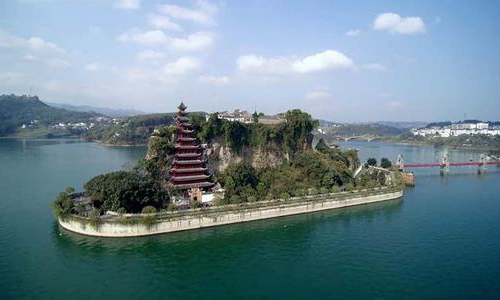

In the morning, the buffet is prepared for you. After breakfast, you can take the morning Tai Chi exercise.
Today, we will pass the Three Gorges, including Qutang Gorge, Wu Gorge, and Xiling Gorge.
At the western entrance of Qutang Gorge, the cliffs stand on both sides are with a height of hundreds of feet and the narrowest point between the two cliffs are fewer than 50 meters. Both sides of the cliffs are so steep just as being cut by a sharp axe. Qutang Gorge is the shortest gorge of the Three Gorges, about 8 kilometers long, but it is also the most majestic and precipitous one. Owing to the extremely narrow gorge, when you look up the sky, you can see a clear distinction between cliffs and the blue sky. That is a famous attraction called “Thin Strip of Sky” in the Qutang Gorge. Worth mentioning in this spot is that the scenery of Qutang Gorge is on the Chinese 10 Yuan paper money.
Wu Gorge is the most impressive section of the Three Gorges, with its unique peaks, grotesque rocks, and towered crags. On both sides of Wu Gorge stand lush mountains. When the cruise enters the Wu Gorge, sometimes a large mountain will appear in front of the cruise and you will wonder if the cruise has reached the end of the river. Suddenly, after going through the turn, you will see a spacious view. On the north bank of the river about 15 km away from Wushan County, there is a huge stone standing on the mountain. From a distance, it looks like a beautiful girl. That is Goddess peak. According to a legend, the place is deeply troubled by floods and people there live a hard life. Therefore, the daughter of West Queen (a Chinese Goddess), Yao Ji, a kind fairy maiden, helps relieve the flood. Finally, people there live a comfortable and happy life. Later, Yao Ji is attracted by the wonderful scene of Wu Gorge, so she becomes Goddess peak to stay in the place to protect it.
Across the river is the magical Goddess Stream, hidden in the mountains. It is said that Yao Jiand her sisters often bathed in the stream. So the stream gained its name. Goddess Stream is about 15 kilometers long, with high mountains, zigzag valleys, and cliffs on both sides. The lush vegetation on both sides of the river is green in summer and red in autumn. The water in the stream are bright and clear. Looking down from the sky, Goddess Stream is like a ribbon winding among the peaks.
Afterward, we will visit Xiling Gorge. Xiling Gorge is the longest gorge of the Three Gorges, famous for its grotesque stones and treacherous water. In the Gorge, there are numerous streams, springs, caves, and rocks on both sides where many poets left lots of poems to extol this place. You will never regret going to Dengying Gorge (In Chinese, Deng means the light, and Ying means the shadow) which embraces the superb landscape. It is called Dengying because some of the rocks in the gorge look like the characters in the leather-silhouette show when viewing from afar in the sunset glow. There are four unique rocks in a mountain, which are similar to the vivid images of the four monks: the Monkey King, Monk Pig, Monk Sha, and Monk Xuanzang in Journey to the West.
In the evening, you can enjoy the captain’s welcome party and crew cabaret.
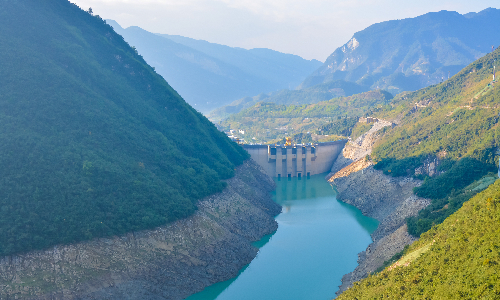
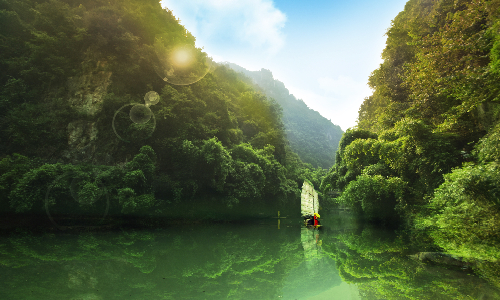
 Shanghai
Shanghai In the morning, you can wake up naturally and enjoy the breakfast buffet. After breakfast, we will visit the Three Gorges Dam Site which is the largest hydro power project in the world. It is about 3,335 meters long and 185 meters high. The dam displays the engineering culture and water conservancy culture in an all-around way. Stepping on the viewing deck, you can not only appreciate the magnificent landscape of the Three Gorges Dam Site, but also enjoy the beautiful scenery of the “cattle” rock (a rock looking like an ox) in Xiling Gorge.
You will board a sightseeing ferry sailing through TGP (Three Gorges Project) Ship’s elevator in our Additional Shore Excursion, which needs an extra fee. After that, you will arrive at Yichang Three Gorges Center Cruise Terminal by bus. And then the tour guide will send you to Yichang train station where you need to take the estimated train D354 14:46/22:21 to Shanghai.
In Shanghai, your guide will be waiting for you at the train station and will send you to the hotel. Shanghai will always amaze you in our Yangtze River Cruise Tour. Shanghai has a permanent resident population of 24,870,900, covering an area of 6,340 square kilometers. Shanghai is China’s center of the international economy, finance, trade, shipping, science, and technology innovation. In Shanghai, you can enjoy the charm of the metropolis.
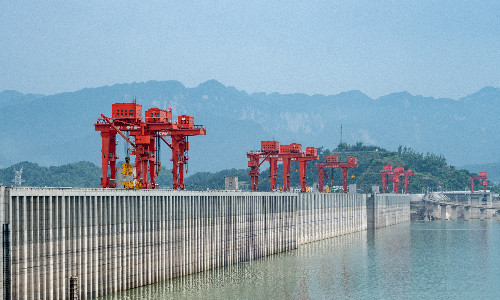
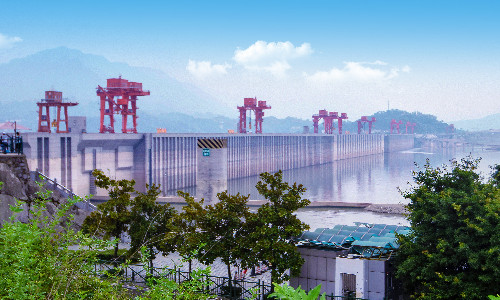
In the morning, we will go to Yu Garden (closed on Monday) which is a kind of Chinese classical garden in southern China. Built in the Ming Dynasty (1368-1644), it covers an area of over 2 hectares. It was a private garden originally built by an officer of Sichuan Province. He constructed the garden for his parents and designed to make his parents enjoy their old age in peace. In Chinese, the character Yu means peace without mishap. As a result, the official named the Yu Garden. However, his parents died without seeing the completion of Yu Garden. It is worthwhile to visit Sansui Hall in Yu Garden. In the Qing Dynasty, Sansui Hall was a place where the emperor’s imperial edict was announced, and the gentry and scholars often gathered. The eight windows at the main entrance of the Sansui hall are carved with patterns of rice, wheat, corn, sorghum, and fruits.
Next, we will go to Shanghai Old Street, also named Little East Gate. Before, there was a gate in the east of Shanghai Old Street, but the gate was not preserved because of historical reasons. But the name of the Little East Gate was passed until now by locals. Walking into Shanghai Old Street, it seems that you went back to the prosperous bazaar a hundred years ago. Shanghai Old Street brings together a group of Shanghai’s earliest old-style Chinese golden jewelry stores, bars, teahouses, opera houses, and restaurants. It is divided into East and West sections with Guanyi street as the boundary. Right now, the east section retains the characteristics of residential buildings in the late Qing Dynasty.
You will have enough time to enjoy your lunch.
In the afternoon, we will visit Shanghai Tower, a landmark skyscraper 632 meters high, covering 30,368 square meters. It is the tallest building in China. After taking the fastest elevator in China to the Observation Deck on the 118th floor (580 meters high), you will have a full view of Shanghai city on the both sides of the Huangpu River.
After that, your tour guide will lead you to Nanjing Road, one of the largest commercial centers in Shanghai, with a length of 5.5 km. It’s a place where thousands of businessmen gather, a window for Shanghai to open to the outside world, and a paradise for shoppers at home and abroad. Having been known as the first commercial street in China, there are all kinds of time-honored shops and shopping malls on both sides of Nanjing Road. The time-honored delicacy of Nanjing Road is countless. Among all the delicacies, the sliced duck in Yanyun restaurant is worth tasting. When you eat this specialty, wrap the sliced duck with pancakes, add some Chinese green onion and the special sauce, and bite it down. The sweet smell of the sauce integrates the smell of crispy duck perfectly! If the sliced duck can not satisfy you, you must try fresh pork mooncakes. The fresh pork mooncake has a long history. It pays great attention to every step of making procedure from material selection to baking. The key to crispness is to roll the pastry repeatedly. Smoked fish is also a delicacy worth trying. 2 to 2.5 kg -fresh-black carp was chosen as raw material. After cleaning and slicing, the cook soaks it in the old sauce for a while, fries it in the oil pan, and then soaks it in the sauce again. Only in this way, the finished product is crisp, tender, and mellow.
After enjoying the delicacies, we will go to the Bund which is located on the Bank of Huangpu River. The Bund is 1.5 km long whose west side is the concentration of financial and foreign trade institutions in old Shanghai. On the east side lies Huangpu River. Since Shanghai became a commercial port, foreign banks, commercial banks, associations, and newspapers offices began to gather here. Thus, the Bund became the financial center of China and even the Far East. 52 classical buildings of different styles stand on the Bund which has a reputation of exotic building clusters in the Bund of Shanghai. As one of the landmarks of Shanghai, those buildings are important historical sites and representative buildings in modern China. Most of the buildings on the Bund have been rebuilt three or more times. Architects from all over the world have shown their skills here, making the Bund, which is not large in area, gather more than 20 buildings of different periods, different countries, and different styles. Therefore, the Bund is also known as the “World Architecture Expo”.
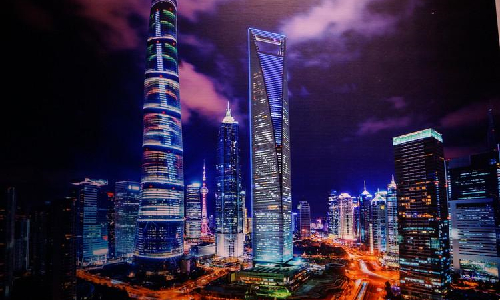

 Xi’an
Xi’an In the morning, after your breakfast, your guide will send you to the airport. You will take the estimated flight MU9644 11:20/14:05 to Xi’an. In the afternoon, arriving in Xi’an, your local tour guide will pick you up and send you to the hotel, and then you can have a good rest.
After breakfast, we will visit Terra Cotta Warriors and Horses Museum, northeast of Xi’an city, distancing 38 km from the city center to the site by car. It takes around 1-hour drive. Terra Cotta Warriors and Horses are a kind of ancient tomb sculpture. As sacrificial objects, Terra Cotta Warriors and Horses are made into the shapes of chariots, battle steeds, and soldiers buried with Emperor Qinshihuang. In 1987, the pit of Terra Cotta Warriors and horses was listed on the world heritage list approved by UNESCO, and known as “the eighth wonder of the world’. It has become a famous piece of Chinese ancient splendid civilization and is known as one of the eight rare treasures of ancient tombs in the world. There are 800 Terra Cotta Warriors in these pits in total. However, each Terra Cotta Warrior looks differently. Each Terra Cotta Warrior wears different clothes and even their ears are not the same. Because each Terra Cotta Warrior is made according to different human prototypes who come from all over the country, so the appearances are not same. If you look at these Terra Cotta Warriors carefully, you will find that each of them is a single-fold eyelid. It is said that their double eyelids were painted with colors, but the colors fell off after they were unearthed, so they all became single eyelids.
Then we will drive back to the city and visit the Big Wild Goose Pagoda, which was seven-story pagoda, with a total height of 64.517 meters and a bottom side of 25.5 meters. In 652, Monk Xuanzang himself supervised the construction of the Big Wild Goose Pagoda to preserve the Buddhist statues, Buddhist texts, and Buddhist relics. Xuanzang, a monk in the Tang Dynasty (618-907), traveled to the origin of Buddhist – India for 17 years and spent 19 years translating the Buddhist texts brought back from India until he died. One of the most remarkable artifacts preserved in the pagoda is the Canon of the shell leaf, a scroll written on the leaves of the Pattra (a kind of tall tree in India). As there was no paper in ancient India, leaves of the Pattra were often used for writing scriptures. All 657 scriptures retrieved by Xuanzang along the ancient Silk Road were Pattra-leaf scriptures. Right now, inside the fourth floor of Big Wild Goose Pagoda, there are two pieces of the Pattra-leaf Sutra, about 40 centimeters long and 7 centimeters wide, on which are inscribed with dense Sanskrit. It is said that there are less than 10 scholars in the world who know this text, which is very precious.
Then we will visit City Wall where you can ride a bike or share a tandem bicycle with your friend. It is the largest and best-preserved ancient city wall in China. Located in the central area of Xi’an, Shaanxi Province, it has a wall height of 12 meters, a top width of 12 - 14 meters, and a bottom width of 15 - 18 meters. The original City Wall was made of layers of rammed loess. The bottom layer was rammed with a mixture of soil, lime, and glutinous rice juice, which made it extremely hard. Later, the walls were covered with bricks as you can see right now.
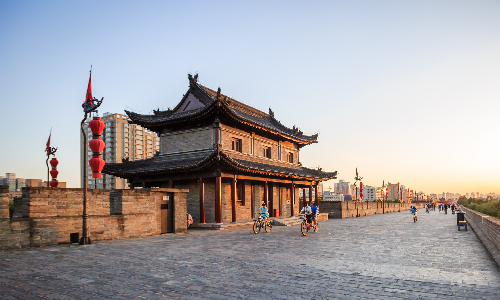
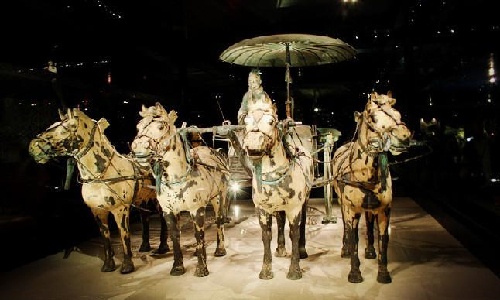
 Beijing
Beijing Today, your guide will send you to the airport after breakfast and you will take the estimated flight CA1232 11:00/13:10 to Beijing.
After getting to Beijing, your local guide will pick you up and head to the hotel. Then you can either take a good rest or do anything you want to do. Beijing is the last stop on our Yangtze cruise China tour.
After breakfast, we will visit Tian’anmen Square, located in the downtown area of Beijing and the south of the Forbidden City, covering 4,800 square kilometers. New China held a grand founding ceremony on October 1st, 1949 there. And it was the place that Mao Zedong declared the founding of the People’s Republic of China.
And then we will enter the Forbidden City (closed on Monday) through Tian’anmen gate tower. The Forbidden City is the royal palace of the Ming (1368-1644) and Qing Dynasties. It covers an area of 720,000 square meters. There are more than 70 palaces and more than 9,000 rooms. The Forbidden City is divided into two parts: the Inner Court and the Outer Court. The central area of the Outer Court consists of three main halls, including Hall of Supreme Harmony, Hall of Central Harmony, and Hall of Preserving Harmony, which are places for national ceremonies. The center of the Inner Court is composed of Palace of Celestial Purity, Hall of Union, and Peace and Palace of Earthly Tranquility, where emperors and empresses live in. While the six eastern palaces and the six western palaces are the places where emperors’ concubines live. Now, I would like to introduce a mysterious sort of people, eunuchs. A eunuch is a male who has his genitals castrated and served in court. In ancient times, they were responsible for serving the emperor and his family. The eunuchs could do more physical work than the maids. And to keep the royal bloodline pure, they were all castrated to make the emperor as the only male in the inner court.
In the afternoon, we will visit the Juyongguan Great Wall which is located in the northwest of the Forbidden City. It will take us one hour and ten minutes to arrive there by car. It is 55 km away from Forbidden City to the Juyongguan Great Wall. The Juyongguan Great Wall is built along a 15-kilometer-long valley, flanked by mountains, lush trees, flowers, and beautiful scenery. Standing on Juyongguan Great Wall and looking around, the Great Wall is like a giant hand stretching from the north and south. Juyongguan Great Wall was originally a military project used to resist the enemy. After giving you some free time to walk on the Great Wall, your guide will send you to the hotel.


Today, your guide will send you to the airport according to your flight. Wish this trip leaves you an unforgettable memory. Look forward to serving you next time.
Writer: Wang Chongchong
Proofreader: Lexie
| City | Five Star hotel list | Four Star hotel list |
|---|---|---|
| Hong Kong | Harbour Grand Kowloon | Harbour Plaza North Point Hotel |
| Yangtze River Cruise | Victoria Anna | Victoria Anna |
| Chongqing | Hilton Chongqing | Yangtze Island Hotel Chongqing Jiefangbei Walking Street Branch |
| Shanghai | Ocean Hotel Shanghai | Courtyard by Marriott Shanghai Central |
| Xi'an | Tianyu Gloria Grand Hotel Xi'an | Sunworld Dynasty Hotel |
| Beijing | Sunworld Dynasty Hotel Beijing Wangfujing | Sunworld Hotel Wangfujing |
 |
![]() About your child or infant, please contact us for a discounted price.
About your child or infant, please contact us for a discounted price.



We started with a few days in Beijing & ended in Shanghai, from where we visited the Forbidden City and Great Wall. In between we visited Terra Cotta Warriors Museum, Panda Base, Shanghai Disneyland.

We had a wonderful holiday in China which will remain long in the memory. China is a breathtakingly beautiful country full of splendid temples and palaces, mountains and rivers, peaceful rural scenes and bustling shopping streets.
 QUICK ENQUIRY
QUICK ENQUIRY